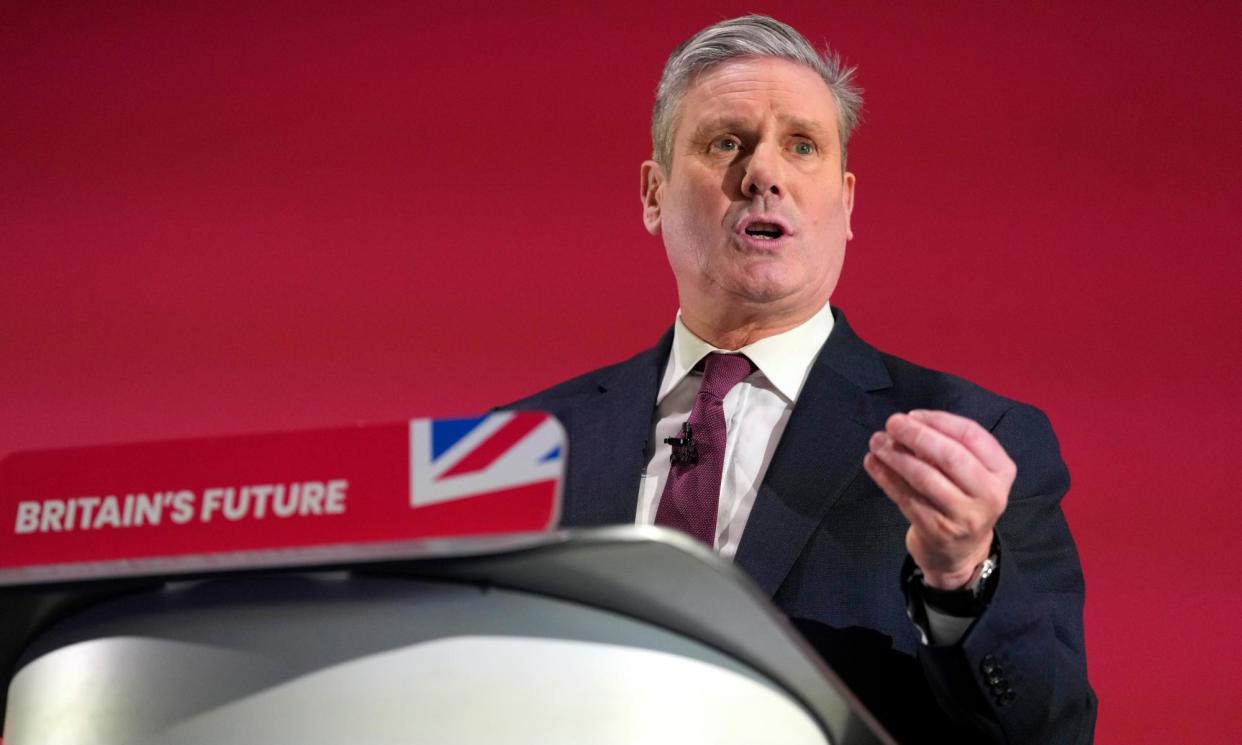TechScape: My pet theory that Google’s Waze will help drive Starmer to No 10

There’s a theory I’ve been floating around for a while that I want to try on you: Google’s 2013 acquisition of Waze sealed the election for Keir Starmer.
I know, but bear with me.
Waze was founded in 2006 as digital mapping project FreeMap Israel, but slowly evolved into a GPS navigation service by the beginning of the next decade. Even in the heady days of the early app economy, Google Maps was dominant, pre-installed as it was on to iPhones and Android. But Waze had a secret weapon: it could get you where you were going faster.
Google Maps has had live traffic information since 2007, but the service had always been very cautious about incorporating it into driving directions. Waze took the opposite tack, regularly and conspicuously rerouting drivers based on minor fluctuations in traffic speed, as well as encouraging users to report obstacles, speed traps and other delays.
Where Google Maps would give users the obvious routes, Waze was more likely to suggest zigzagging through backstreets, avoiding traffic lights and steering clear of known hotspots. It’s unknown just how much the aggressive routeing sped up journeys, versus merely making them feel faster by keeping drivers more involved, but the approach was a hit, with Waze carving out a strong niche among professionals.
Then, in 2013, Google bought the company for $1.3bn. Even at the time, the purchase was controversial, given Google’s sway in the space, but it went through (and in 2020 the US Federal Trade Commission went as far as to reassess whether the approval was correct). Waze continued to operate as an independent company, and was then folded into the maps team almost a decade later, in 2022. Still, aspects of its technology were incorporated into Google Maps within weeks of the takeover, including the real-time incident reports.
But there’s a difference between sending diehard professional drivers zigzagging through backstreets and making the technology available to hundreds of millions of drivers globally by default. Between 2009 and 2019, traffic on minor roads rose by 10%. In London, a years-long decline in traffic on backstreets stopped entirely.
The rise of rat-running turned traffic into a political issue, and led to its own reaction: low-traffic neighbourhoods. Which is where we get on firmer ground for many readers, who will vividly recall the pandemic-era rise of LTNs and the ensuing (and occasionally vicious) political battles.
For a while, LTNs were something that cut across political divides. It was a Conservative policy that gave councils more freedom to impose them, and many Conservative councils did exactly that. But as time went on the positions hardened, helped by the rise of conspiracy theories about the “15-minute city” and the Conservative victory in the Uxbridge byelection, until the party decided to go all in on being the party of drivers.
The idea may not be a bad one on the face of it, in a country where more than half of all residents have a driving licence, but it led to one of the many self-inflicted injuries of Rishi Sunak’s premiership: the cancellation of HS2 at the September party conference.
The message of the conference was that Sunak’s Conservatives were the party of “long-term thinking”, whereas Labour were short-termists who couldn’t be trusted with planning for a difficult future. The actual takeaway, instead, was that Sunak had stood up in Manchester and cancelled a train to Manchester to protect short-term budget priorities.
In a world where Labour is on track to win a majority of 500 seats and the Tories left struggling to fill a pod in the London Eye, it’s impossible to say any single thing will win them the election. If Keir Starmer stood up and vowed to scatter caltrops on every motorway and A-road in Britain, polling suggests he would still be the next prime minister.
But while the world has caught up with the fact that the internet is real life, there’s still an underappreciation of the slow changes it effects. Everyone can tell, when a mob of teens descends on a shopping mall to spot a YouTuber, or when an online community is suddenly implicated in a mass murder, that the internet can change real-world behaviour. If you suggest that people live their lives differently, often in quite fundamental ways, because of tech, and that these changes are slowly leading to seismic outcomes, you still sound a bit weird.
Even drawing the most direct links – “The rise of Facebook led to the populist wave of Brexit and Trump”, say – will get you labelled as someone with an outsized view of the power of technology. More diffuse ones, like my pet theory, sound even more barmy.
But technology does change the world, and it would be odd if its only effects were obvious. And so, as we stare down the barrel of generative AI upending a lot of what we’ve taken for granted over the last century, I still wonder: what next?
If you want to read the complete version of the newsletter please subscribe to receive TechScape in your inbox every Tuesday.


